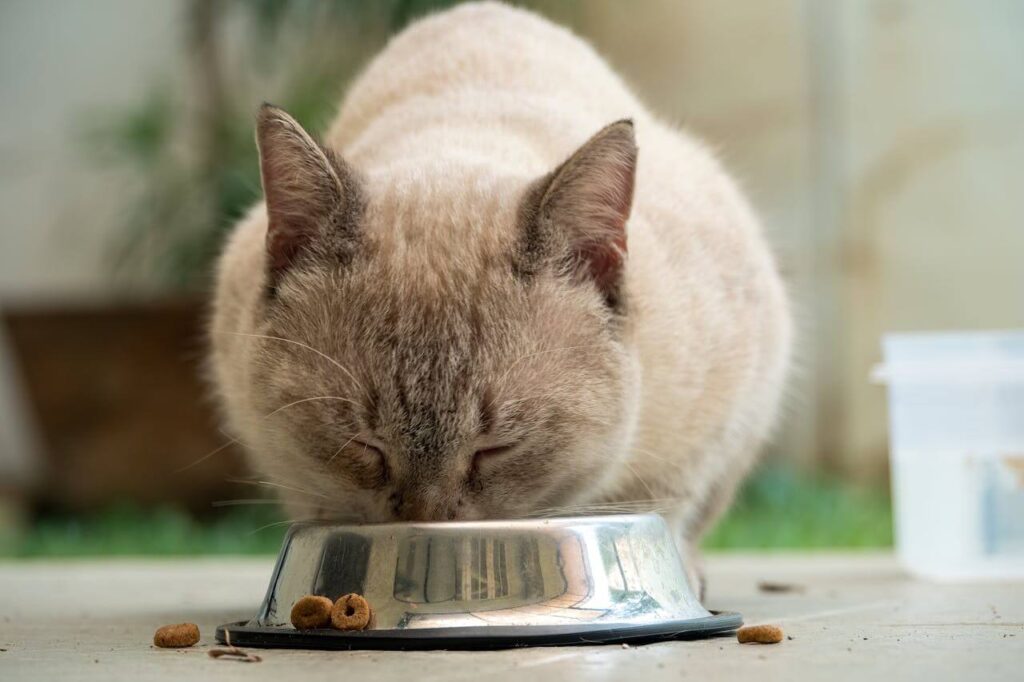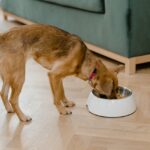Introduction
Picture this: It’s 6 AM, and your cat is sitting by their empty bowl, giving you that look. You know the part judgment, part desperation, and 100% “human, I require sustenance immediately.” As cat parents, we’ve all been there. But here’s the thing: choosing right cat nutrition food what goes in that bowl isn’t just about stopping the morning protests. It’s about giving your furry overlord the best shot at a long, healthy, and ridiculously happy life.
If you’ve ever stood in the pet food aisle feeling completely overwhelmed (seriously, why are there 47 different types of salmon pâté?), this guide is for you. We’re going to cut through the marketing fluff and get to what really matters: feeding your cat nutrition diet like the magnificent little predator they are.
Why Your Cat’s Diet Actually Matters More Than You Think
Let’s start with a reality check: cats aren’t just small dogs with attitude problems. They’re what scientists call “obligate carnivores,” which is a fancy way of saying they literally need meat to survive. While your dog might thrive on a varied diet (and steal your French fries), your cat’s body is basically a meat-processing machine that happens to purr.
Here’s what blew my mind when I first learned this: cats can’t even taste sweetness. Their taste buds evolved to detect amino acids in meat, not sugar. So when Mr. Whiskers turns his nose up at that expensive grain-free kibble, he might actually be trying to tell you something.
The real-world impact is huge:
- Cats on properly balanced diets live 2-3 years longer on average
- They have 25% fewer urinary tract issues by age 10
- Their risk of obesity drops significantly
- Vet bills? Yeah, those go down too.
I learned this the hard way with my friend Sarah’s cat, Luna. Sarah was feeding Luna budget kibble because, well, cat food is expensive. Luna was lethargic, her coat looked dull, and she’d gained weight. One vet visit later, Sarah switched to a high-protein wet food, and within weeks, Luna was back to her old self—zooming around the house at 3 AM like cats do.
Decoding What Your Cat Actually Needs (It’s Simpler Than You Think)
Protein: The Non-Negotiable Foundation
Your cat needs protein like you need coffee on Monday morning—it’s not optional. We’re talking 26-40% of their total diet should be high-quality animal protein. Not plant protein (sorry, vegetarian cat parents), but the real deal: chicken, turkey, fish, beef.
Pro tip: Flip that cat food can over and check the ingredient list. The first ingredient should be a named meat source, not “meat by-products” or “poultry meal.” If you see something like “Chicken” or “Salmon” at the top, you’re on the right track.
What I recommend: The Tiki Cat Wet Food Variety Pack has been a game-changer for every cat owner I know. Real fish, minimal fillers, and cats actually get excited about mealtime again.
Fats: The Secret to That Instagram-Worthy Coat
Fats should make up about 9-20% of your cat’s diet. This isn’t just about energy (though cats do use fat for fuel)—it’s about keeping that coat shiny and their skin healthy. Ever wonder why some cats have coats that practically glow while others look a bit… meh? It often comes down to those omega-3 and omega-6 fatty acids.
Quick story: My neighbor’s cat, Mittens, had a dull coat that was shed everywhere. After adding a high-quality omega-3 supplement to his food for about six weeks, the difference was night and day. Mittens went from looking like he’d been through a lint roller to having fur that would make a Persian jealous.
Water: The Often-Forgotten Game Changer
Here’s something that might surprise you: cats are basically camels. They evolved in desert environments, so they have a naturally low thirst drive. In the wild, they’d get most of their water from their prey. This is why feeding only dry kibble can be problematic—it’s like trying to stay hydrated by eating crackers.
The solution: Wet food is your friend. It’s typically 70-80% water, which helps keep your cat properly hydrated. If your cat is a dry food devotee, try a water fountain. Something about moving water triggers their interest, and you’ll be amazed at how much more they drink.
Life Stage Nutrition: Because Kittens Aren’t Just Tiny Adults
Kittens (0-12 months): The Energizer Bunnies
Kittens are basically furry rockets fueled by pure chaos and an insane metabolism. They need 2-3 times more calories per pound than adult cats, plus extra protein (30-40%) for all that growing they’re doing.
Feeding schedule: 3-4 small meals a day. Yes, it’s a lot, but trust me—a hungry kitten is not a quiet kitten.
What works: Royal Canin Kitten formula is specifically designed for growing cats. It’s pricier than adult food, but those first 12 months set the foundation for their entire life.
Life hack: Get an automatic feeder if you work long hours. Consistent meal times help with house training and prevent the 4 AM wake-up calls.
Adult Cats (1-7 years): The Sweet Spot
This is usually the easiest phase. Adult cats need about 26-35% protein, and their calorie needs level off. The main challenge? Not letting them turn into furry bowling balls.
Real talk: Indoor cats need fewer calories than their outdoor counterparts who are actually hunting and exploring. Adjust portions based on activity level, not just the feeding guidelines on the package.
My go-to recommendation: Blue Buffalo Wilderness strikes a good balance between protein content and palatability. Most cats love it, and the ingredient list is solid.
Senior Cats (8+ years): The Distinguished Elders
Senior cats face a tricky balance: they need fewer calories to avoid weight gain, but higher protein to maintain muscle mass. Think of it like nutrition for an athlete who’s retired but still wants to stay in shape.
Special considerations:
- Smaller, more frequent meals (2-3 times daily)
- Warmed food (heat releases aromas that appeal to declining senses)
- Softer textures if dental issues are present
What I’ve seen work: Hill’s Science Diet Senior is formulated specifically for older cats. It’s not the cheapest option, but senior vet bills are way more expensive than premium food.
The Great Wet vs. Dry Food Debate (And Why Both Camps Are Right)
This is probably the most hotly debated topic in cat nutrition, and honestly? Both sides have valid points.
Team Wet Food Makes These Arguments:
- Hydration: 70-80% water content keeps cats properly hydrated
- Palatability: Most cats prefer wet food (it smells stronger)
- Closer to natural diet: Mimics the moisture content of prey animals
- Weight management: Higher protein, lower carbs typically
Team Dry Food Counters With:
- Convenience: Doesn’t spoil quickly, easier for busy schedules
- Cost: Generally more economical per calorie
- Dental benefits: Some kibble helps scrape tartar (though it’s not a substitute for dental care)
- Storage: No refrigeration is needed
The Truth? Most Vets Recommend Both
Here’s what I’ve learned from talking to veterinarians: the best diet is often a combination. Wet food for hydration and nutrition, dry food for convenience, and some dental benefits.
A typical combo approach:
- Morning: Wet food portion
- Evening: Wet food portion
- A small amount of high-quality dry food available during the day
Pro tip: If you’re doing combo feeding, count the dry food calories in your cat’s daily total. Those little kibbles add up fast.
Practical Feeding Strategies That Actually Work in Real Life
Portion Control (AKA How to Avoid Having a Garfield Situation)
Over 60% of cats in the US are overweight. That’s not just a cosmetic issue—extra weight puts stress on joints, and organs, and can lead to diabetes.
The method that works: Measure everything. I know it seems obsessive, but eyeballing portions is how cats end up chunky. Get a kitchen scale and actually weigh the food. A portion-control bowl can also help with consistency.
Real example: My friend Mike’s cat Max was 18 pounds and barely moving. The vet put Max on measured portions of weight management food and encouraged more play with an interactive cat toy. Six months later, Max was down to 12 pounds and acting like a kitten again.
Creating a Feeding Schedule (Your Cat Will Thank You)
Cats are creatures of habit. Free-feeding (leaving food out all the time) might seem convenient, but it often leads to overeating and makes it harder to monitor health changes.
What works:
- Kittens: 3-4 meals daily
- Adults: 2-3 meals daily
- Seniors: 2-3 smaller meals daily
Game changer: An automatic feeder keeps meals consistent even when your schedule isn’t. Some cats get stressed when meal times vary, and consistency can actually improve their overall behavior.
Making Mealtime Mentally Stimulating
Cats are hunters. In the wild, they’d “work” for their food. A bowl on the floor doesn’t exactly challenge their instincts.
Simple solutions:
- Puzzle feeders make cats “hunt” for kibble
- Hide small portions around the house
- Use food-dispensing toys
I’ve seen lazy cats become more active just by making them work a little for their food. It’s like the difference between Netflix and actually going to the gym—both fill time, but one is way better for you.
Common Feeding Challenges (And How to Actually Solve Them)
The Picky Eater Problem
Some cats are just… particular. They’ll sniff their food, give you a look of pure disdain, and walk away. Here’s what often works:
Temperature matters: Try warming wet food slightly. The heat releases aromas that appeal to cats.
Texture preferences: Some cats prefer pâté, others want chunks in gravy. Experiment with different textures.
The sprinkle trick: FortiFlora probiotics not only support digestive health but also make food more appealing. Many cats find it irresistible.
Important: If a cat stops eating for more than 24 hours, call your vet. Cats can develop serious liver problems from not eating.
Food Allergies and Sensitivities
About 5% of cats have food allergies, most commonly to specific proteins like beef or chicken. Signs include:
- Excessive scratching or grooming
- Digestive upset
- Chronic ear infections
- Skin irritation
The solution: Limited ingredient diets like Natural Balance LID can help identify triggers. Work with your vet on an elimination diet to pinpoint the problem.
Dental Health Issues
Poor oral health affects what and how cats eat. Signs of dental problems:
- Bad breath (worse than normal cat breath)
- Difficulty chewing
- Dropping food
- Favoring soft foods
Prevention: Regular brushing with a cat-specific dental kit and dental treats helps. Annual dental checkups are crucial for older cats.
When to Consider Special Diets
Some cats need therapeutic diets for medical conditions. These should always be veterinarian-supervised:
Urinary health issues: Prescription urinary diets help prevent crystal formation and support bladder health.
Kidney disease: Low-phosphorus diets reduce kidney workload in cats with chronic kidney disease.
Diabetes: High-protein, low-carb formulas help manage blood sugar levels.
These foods work, but they’re not one-size-fits-all solutions. Your vet will determine if and when they’re appropriate.
A Word About Homemade and Raw Diets
I get it—the idea of complete control over your cat’s nutrition is appealing. But here’s the reality: cats have incredibly specific nutritional needs, and getting it wrong can be dangerous.
The risks:
- Taurine deficiency (can cause heart problems)
- Calcium/phosphorus imbalances (bone issues)
- Bacterial contamination (especially with raw diets)
- Missing micronutrients
If you’re determined to go this route, work with a veterinary nutritionist. It’s not impossible, but it requires serious commitment and expertise.
Sample Feeding Schedules That Work
Here’s what successful feeding looks like in practice:
For Adult Cats (most common scenario):
7 AM: Half can of wet food + fresh water 12 PM: Small portion of high-quality dry food (optional) 6 PM: Half can of wet food + fresh water
Total daily calories: Adjust based on your cat’s weight and activity level (typically 200-300 calories for the average indoor cat)
For Senior Cats:
8 AM: 1/3 can wet food (warmed slightly) 1 PM: Small portion of dry food + joint supplement if recommended 6 PM: 1/3 can wet food (warmed slightly) 9 PM: Small evening snack if needed
The Long-Term Payoff of Getting This Right
Investing in good nutrition now pays dividends later:
Health benefits:
- Fewer vet visits for preventable issues
- Better weight management
- Stronger immune system
- Healthier coat and skin
Quality of life benefits:
- More energy for play
- Better mood (yes, cats get hangry too)
- Longer lifespan
Financial benefits:
- Lower veterinary costs over time
- Less money spent on ineffective “diet” foods later
- Fewer emergency vet visits
Your Next Steps: Making It Happen
Feeling overwhelmed? Start small:
- Evaluate your current food: Check the ingredient list. Is the first ingredient a named meat source?
- Add moisture: If you’re currently feeding only dry food, try mixing in some wet food or add water to kibble.
- Measure portions: Get a kitchen scale and start measuring rather than eyeballing.
- Establish a routine: Feed at consistent times, even if portions need adjusting.
- Monitor changes: Watch energy levels, coat quality, and bathroom habits. These tell you a lot about nutritional status.
The Bottom Line
Your cat’s nutrition doesn’t have to be complicated, but it does matter. A lot. Every meal is an opportunity to support their health, energy, and happiness. Whether you’re dealing with a finicky kitten, a chunky adult, or a distinguished senior, the principles remain the same: high-quality protein, appropriate moisture, proper portions, and consistency.
Remember, the “perfect” diet is the one your cat will actually eat and thrive on. Sometimes that means trying different options, working with your vet, and yes, probably spending a bit more than you’d like on cat food. But when you see your cat bounding across the room with bright eyes and a glossy coat, you’ll know it was worth every penny.
Your cat depends on you for literally everything—food, water, healthcare, and those 3 AM cuddle sessions. By getting their nutrition right, you’re not just filling their bowl; you’re filling their life with health, energy, and the best possible chance at many happy years together.
Now go forth and feed your feline overlord properly. They’re judging you either way, so you might as well earn their approval.
Looking for specific product recommendations mentioned in this article? All our suggested products are tested by real cat parents and backed by veterinary approval. While we do earn a small commission from purchases (at no extra cost to you), we only recommend products we’d use for our own cats. share your cat’s nutrition wins with the ParentMosaic community, and watch your furry friend thrive, one delicious bite at a time!
Disclaimer: This guide is for informational purposes only and doesn’t replace professional veterinary advice. Always consult with your veterinarian before making significant changes to your cat’s diet, especially if they have health conditions.




